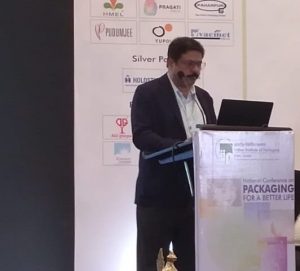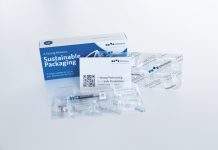Glass has a presence in our daily lives in various forms, such as containers, tableware, automotive and transport, appliances, and electronics. More than 75% of European consumers see glass as the most sustainable and eco-friendly form of packaging material. Glass can be infinitely recycled within a closed loop as a part of the circular economy.
The beauty of glass is its recyclability – no matter how many times it is recycled, its quality never diminishes – glass remains glass! Due to increasing awareness towards sustainability and demand for eco-friendly solutions, in many countries, people have started contributing to achieving a 100% recycling rate by bringing their used glass bottles and jars to the nearest bottle bank.
Glass has an almost zero rate of chemical interactions, ensuring that the products inside a glass bottle are safe, keep their strength, aroma, and flavor. Rajesh Khosla, president and chief executive officer of AGI-glaspac, speaking about glass packaging at the National Conference on ‘Packaging for a better life’ said, “Due to the environmental issues, glass has become a popular choice among industries. Although other packaging materials, including tinplate, flexible packaging, and others, are working on sustainable solutions, still glass bottles are likely to hold a significant share of the container packaging industry. We at AGI, are also committed to giving a very sustainable environment for future generations to come.”

Indian container glass industry
According to Khosla, the global container glass industry is worth approximately US$ 70 billion (roughly Rs 500 thousand crore). In India, the total container glass market is worth US$ 2 billion (around Rs 15000 crore). “Glass does not hold the major share in the country’s packaging market, but hopefully, the market share will go up with the upcoming future trends,” he believes.
Kholsa further stated that from 2008 to 2011, the Indian glass industry was growing at a CAGR of 9%. However, from 2012 to 2016, the growth was flat (1%) because of other packaging materials aggressively taking over the industry. Currently, the glass industry is again growing at a healthy CAGR of 10%.
“The per capita consumption of container glass in India is at 1.8 kilograms, which is much lower compared to other nations, for example, in China, it is 9 kilograms,” he admits but is hopeful that this would provide a possibility of good upside potential in the country.

Glass has poor recyclability in India
Addressing glass recycling in India, Khosla reveals, “In India, the recyclability rate of glass is very poor (only 30 to 35 %) compared to Europe, which is at a level of 75 to 80 %. The high recyclability percentage means that whatever goes to the market, it comes back. Whereas in India, it mostly goes to landfills because our collection, as well as remelting systems, are not functioning well. We should increase the recyclability rate in the country.”
The glass container industry is pro-active
As discussed above, although glass is an excellent packaging material, due to some disadvantages or constraints, other packaging materials are preferred over glass. The limitations include fragility, weight, limited shapes, and cost. Khosla says that the latest developments by the glass industry tackle these disadvantages, “To reduce fragility hot and cold coatings are applied on the surface. The glass industry is consistently reducing the glass weight of products to the tune of 10,000 MT every year using advanced blow-blow and Narrow Neck Press and Blow (NNPB) technologies. AGI has invested almost Rs. One hundred fifty crores (US$ 20 million) in its up-gradation to make light-weighted beer bottles. To address the limited shapes of glass containers available, the latest technologies have been introduced to make all the intricate shapes.”
Speaking about the cost-effectiveness, Khosla states, “Glass is not expensive. We need to have a holistic approach to see the total life cycle cost, which includes recyclability costs as well. Glass is pretty ahead due to recyclability, and it is a better environmental product today as we are considering the circular economy.”
Cosmetic and functional trends
The container glass industry is experiencing two types of trends – cosmetic and functional trends. Khosla explains, “Cosmetic trends like shrink sleeves, hydrographic spray coating, UV printing, and hot foil stamping are happening in the glass industry. For example, the tiny perfume bottles attract you towards them without even knowing what is inside. On the other side, functional trends improve traceability with the help of NFC labels, tags, or bottles. In addition, other things are happening in the industry like LED glass lighting, smart glass bottles, and containers giving information about the temperature and life of the product.”
Innovation and active packaging make a difference at AGI
Established in 1972, AGI glaspac, HSIL Packaging Products Divison, is engaged in the manufacture of high-quality glass containers for food, pharmaceuticals, soft drinks, spirits, beer, wine, and other industries. The company has two state-of-the-art manufacturing plants in Hyderabad and Bhongir (Telangana). AGI melts more than 1600 tons of glass in a day and manufactures 6.5 lakh bottles every day across segments.

Khosla speaks about the company’s latest developments – “AGI is working on the latest technologies including hollow decorations and the internal embossing of glass bottles. AGI is trying to get it patented in India, and our anti-depression bottle is undergoing testing in Europe, as well as antibacterial glass bottles.”
“We are working on a project for beer packaging professionals where they want to know how many times the bottle has been recycled. We are in discussions with global technology providers to get the advanced technology which can enable us to know which product is going where and how many times it can recycle in factories or in filling plants,” he reveals.









